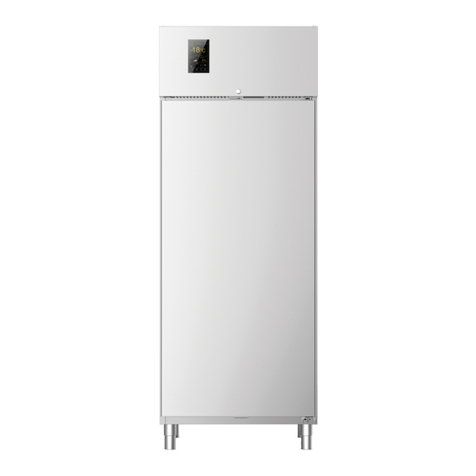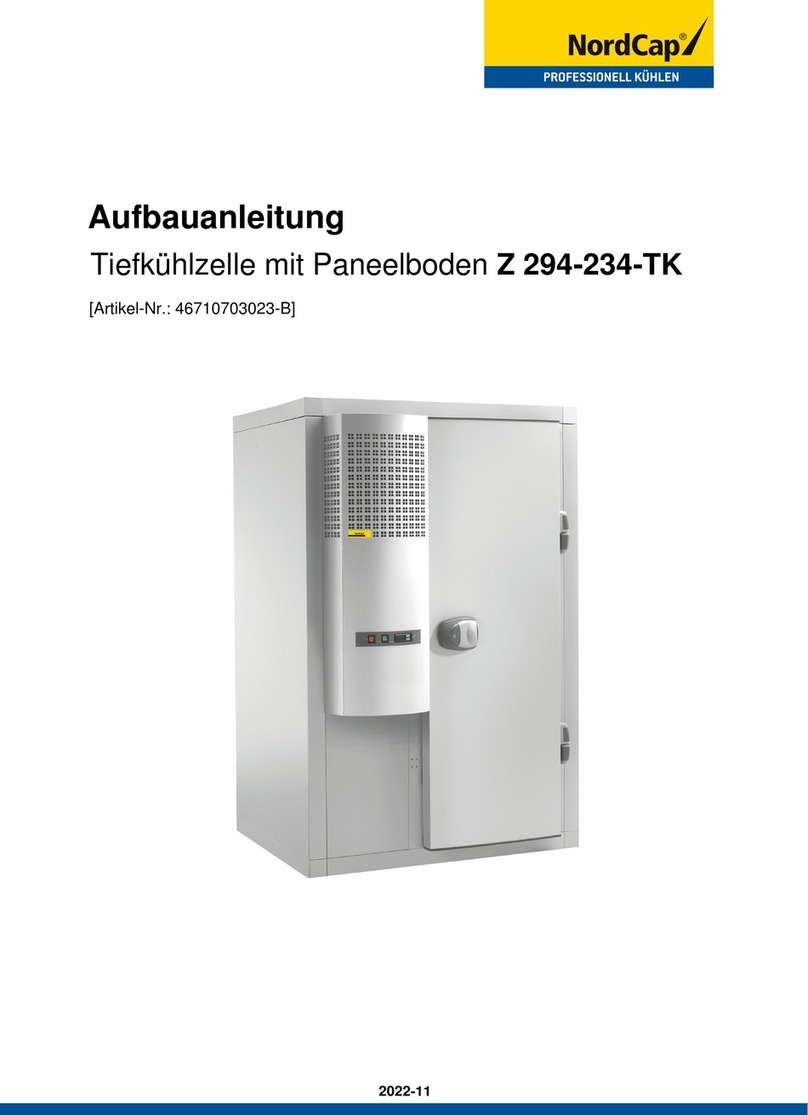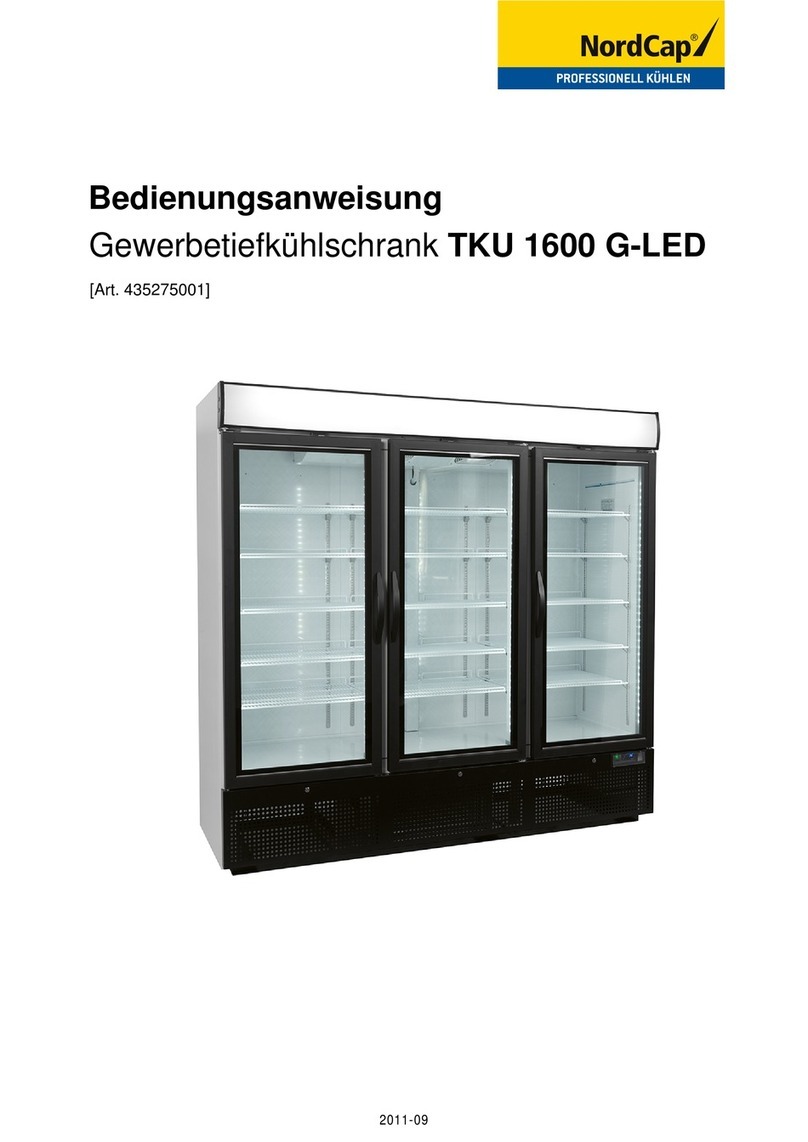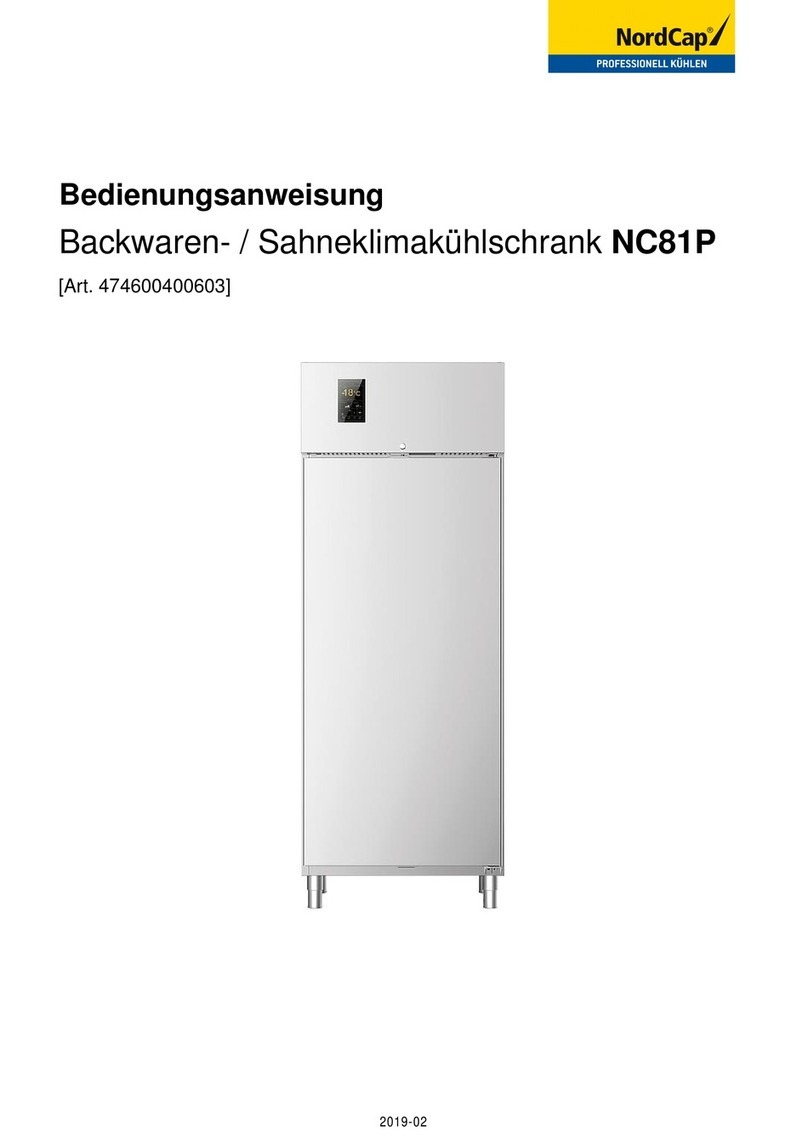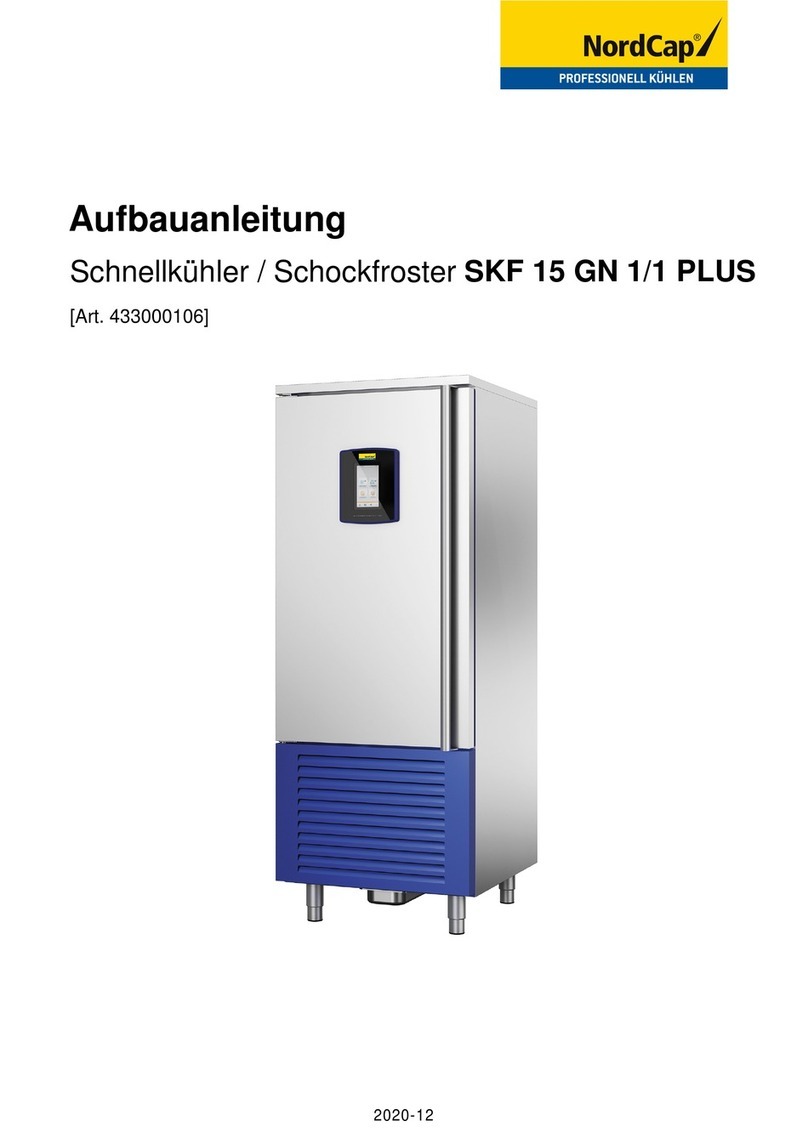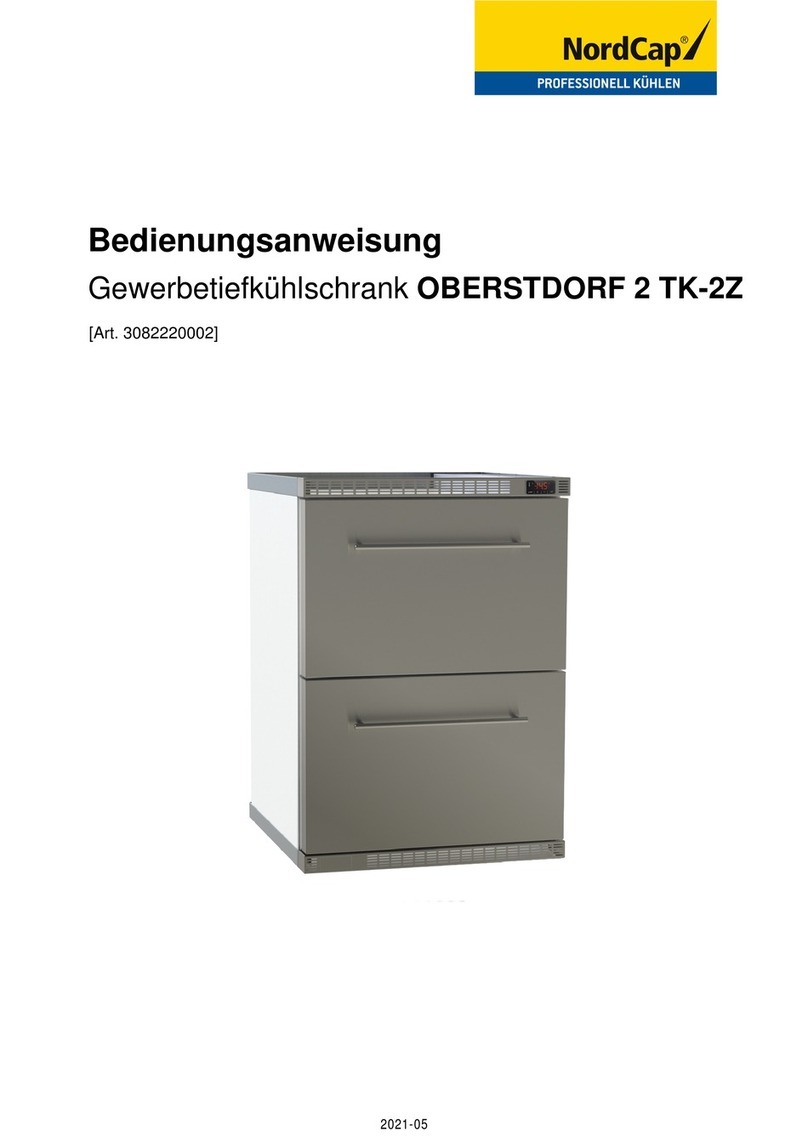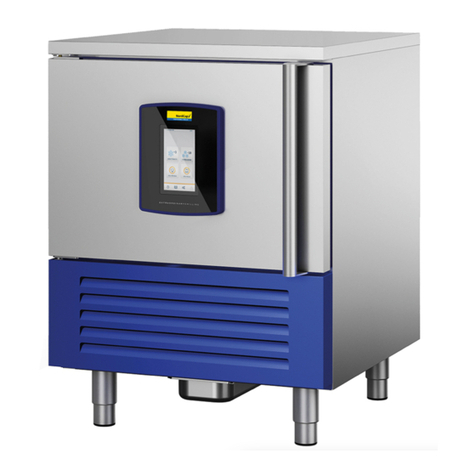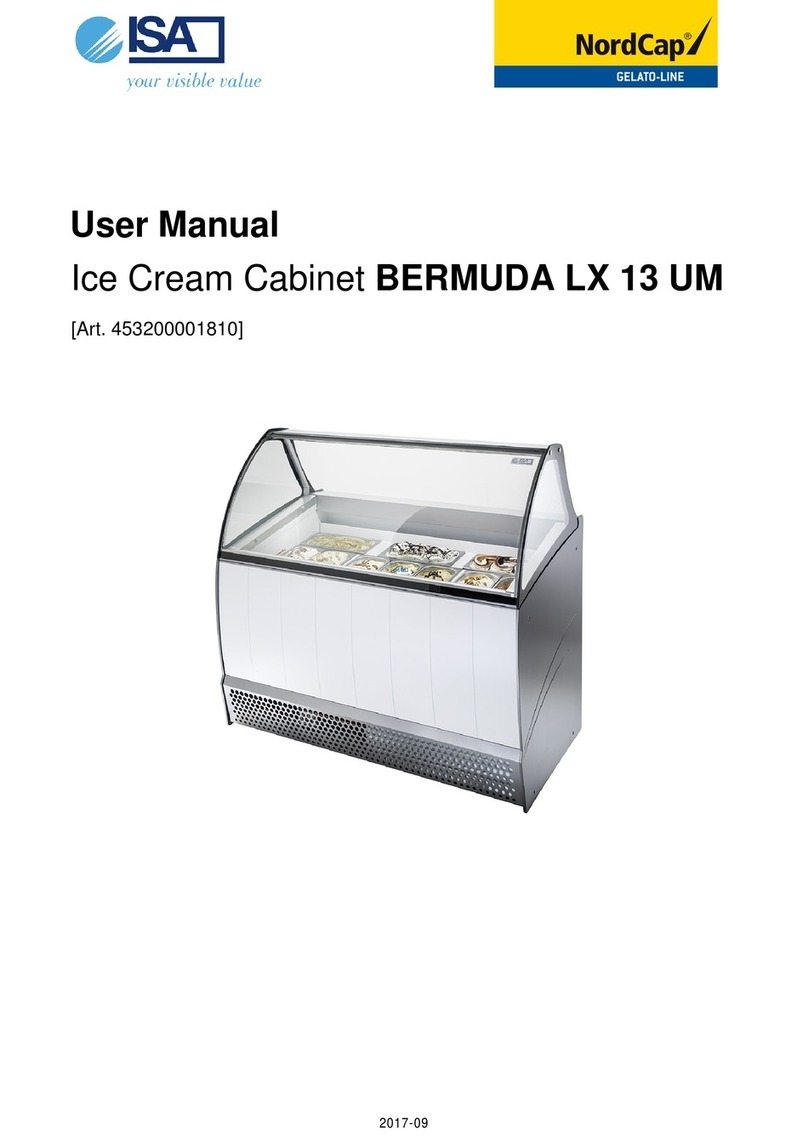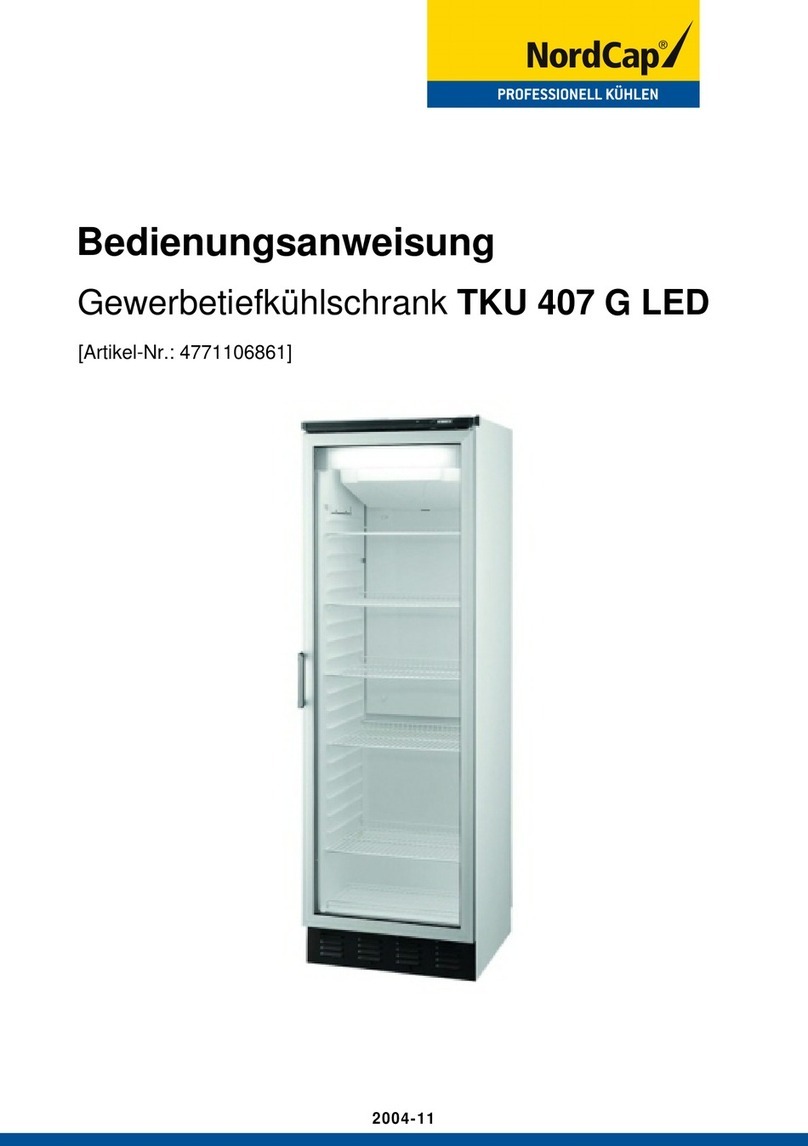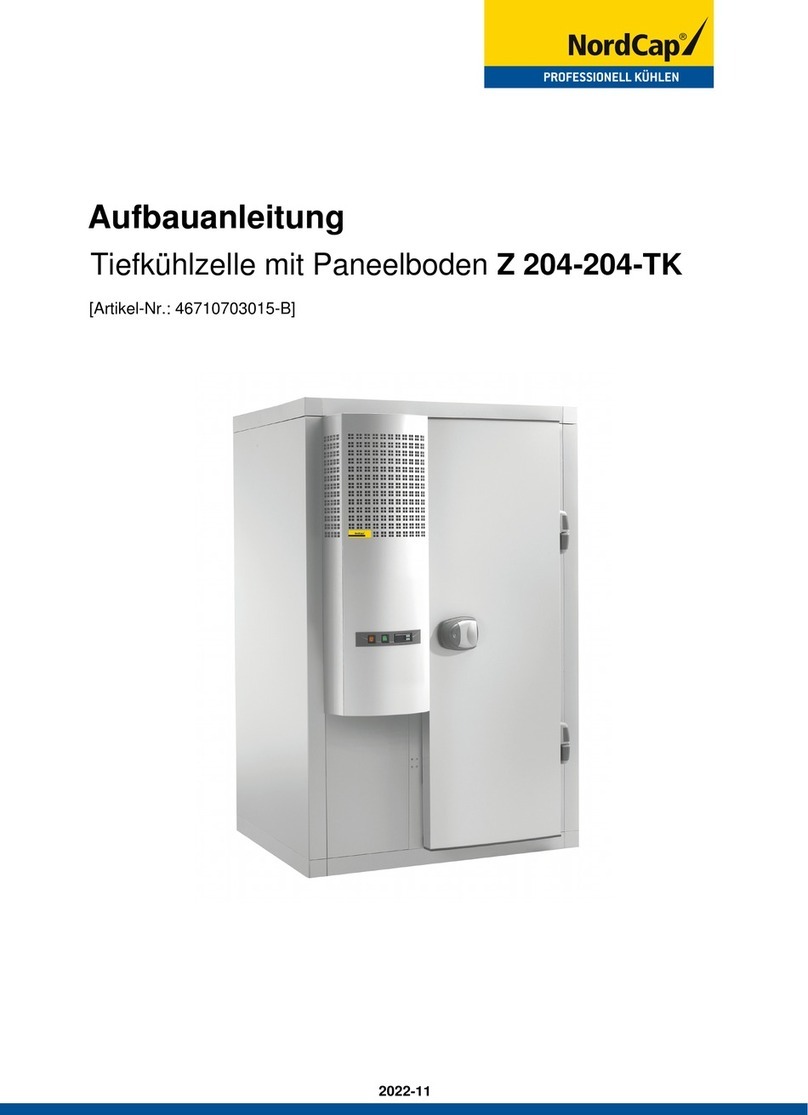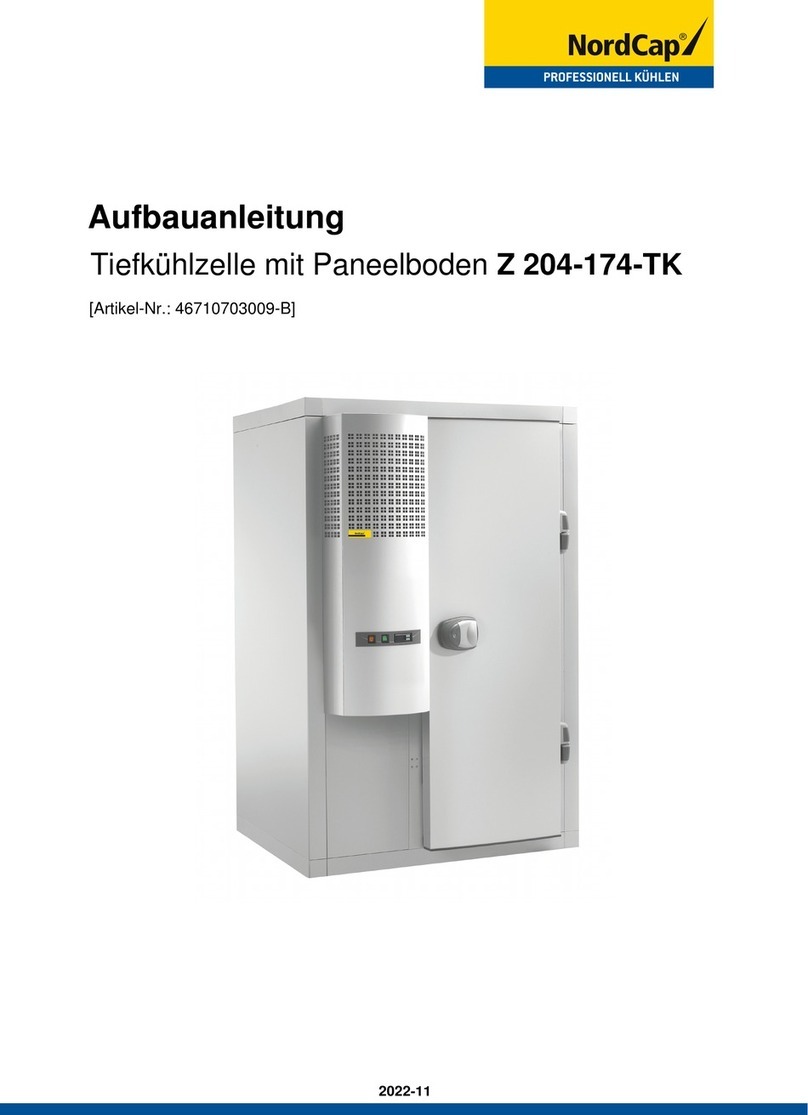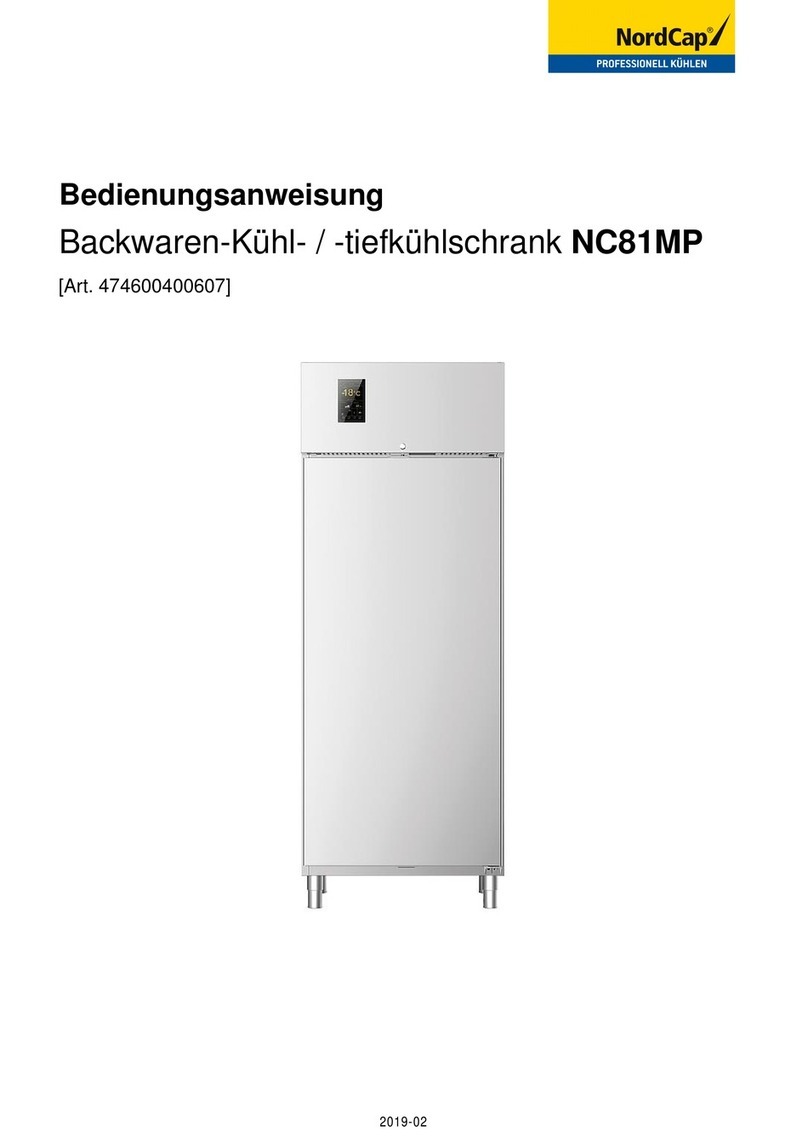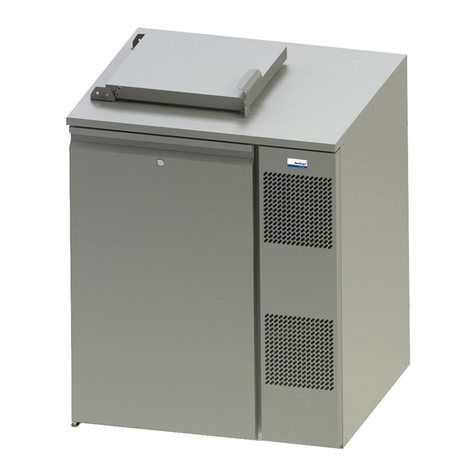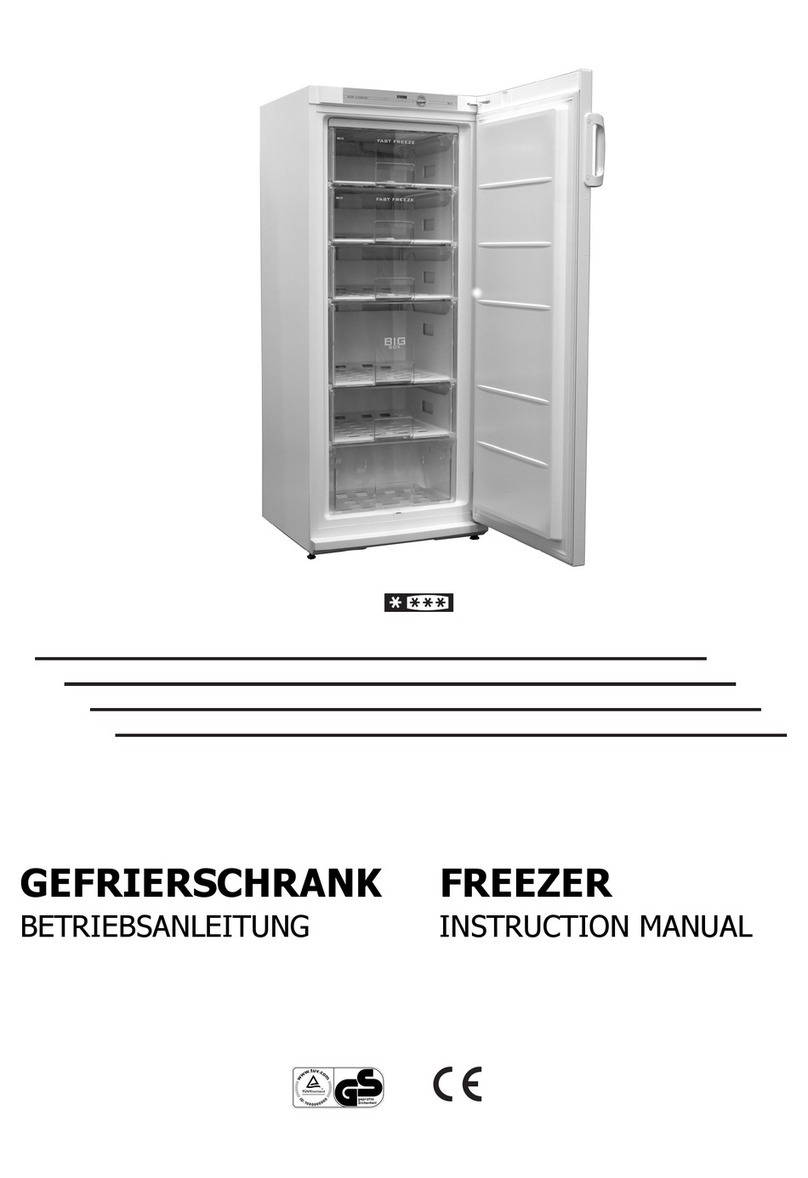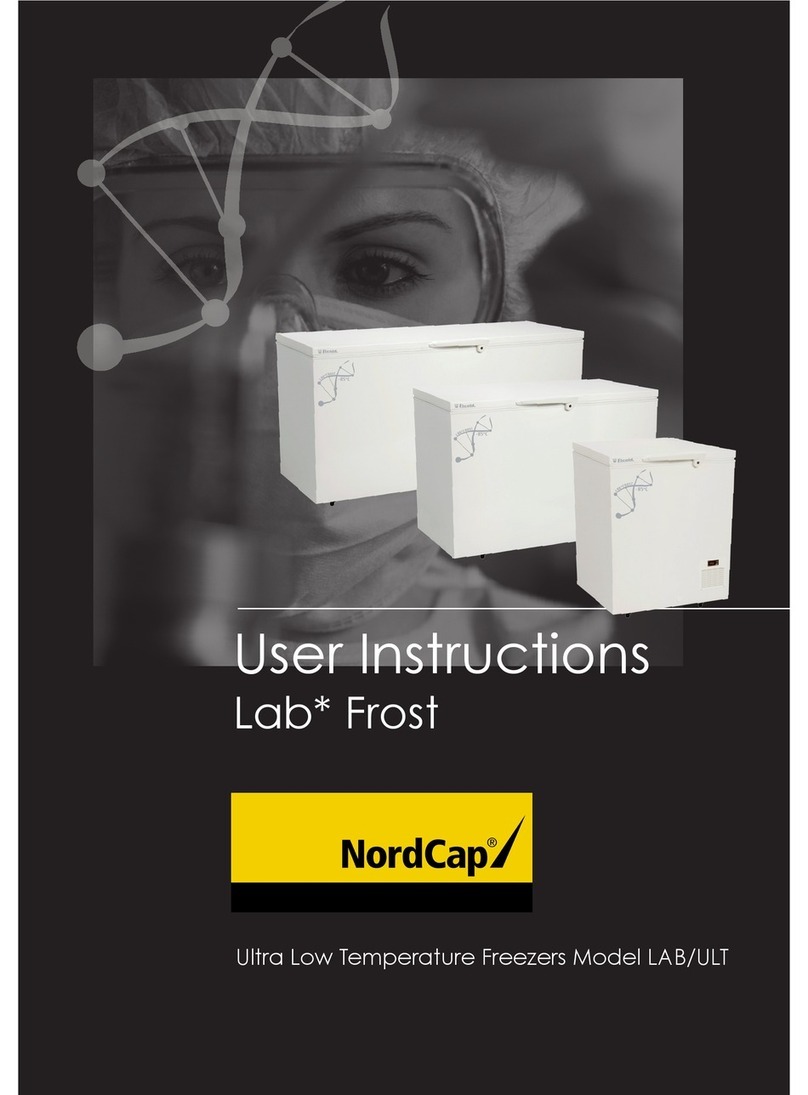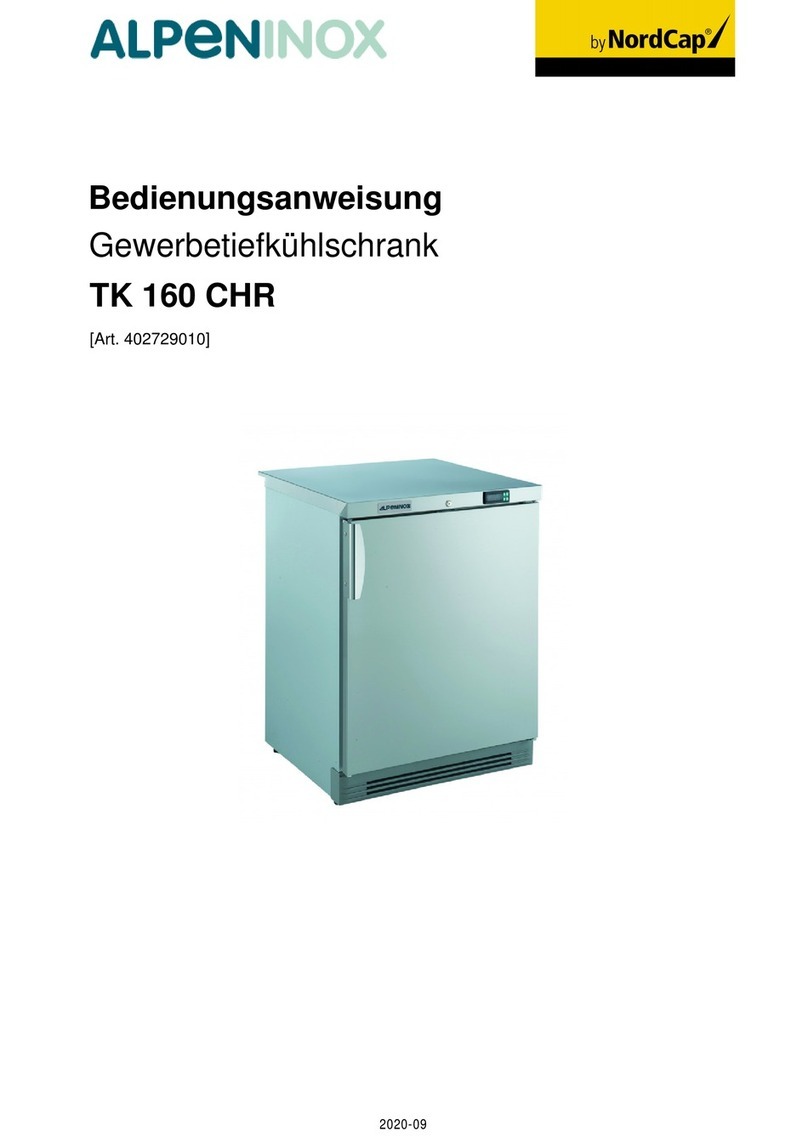
!! ACHTUNG!!
Wenn Sie auf dem Typenschild und auf der Verpackung das Flammensymbol sehen, bedeutet dies, dass das Gerät Propan- oder Isobutangas als
Kältemittel verwendet. Stellen Sie daher vor dem Anschließen des Geräts sicher, dass keines der Rohre des Kältemittelkreislaufs beschädigt ist.
Für jeweils 8 g Kältemittel muss der Raum ein Mindestvolumen von 1 m3 Luft aufweisen. Die Menge des Kältemittels im Gerät ist auf dem am
Gerät angebrachten Typenschild angegeben. Verhindern Sie im Falle eines Kältemittellecks offene Flammen oder Zündquellen in der Nähe der
Leckstelle. Achten Sie darauf, dass Sie die Rohrleitungen des Kältemittelkreislaufs beim Aufstellen, bei der Installation und bei der Reinigung
nicht beschädigen.
Halten Sie die Belüftungsöffnungen im Gerätegehäuse oder in der Einbaustruktur frei von Hindernissen.
Verwenden Sie außer den vom Hersteller empfohlenen keine mechanischen Vorrichtungen oder andere Mittel zur Beschleunigung des
Abtauvorgangs;
Kältemittelkreislauf nicht beschädigen;
keine elektrischen Geräte in den Gerätefächern verwenden, um die Speisen zu konservieren.
6 - EMPFEHLUNGEN FÜR DEN UMWELTSCHUTZ
Verpackung
Das Verpackungsmaterial ist zu 100 % recycelbar und mit dem Recycling-Symbol gekennzeichnet. Für die Entsorgung die lokalen Bestimmungen beachten.
Das Verpackungsmaterial (Kunststoffbeutel, Styroporteile, etc.) muss außerhalb der Reichweite von Kindern aufbewahrt werden, da sie eine potenzielle
Gefahrenquelle darstellen.
Produkt
Gemäß Art. 13 des legislativen Erlasses vom 25. Juli 2005, Nr. 151 zur „Ausführung der Richtlinien 2002/95/CE, 2002/96/CE und
2003/108/CE, zur Beschränkung der Verwendung bestimmter gefährlicher Stoffe in Elektro- und Elektronikgeräten, sowie der
Abfallentsorgung”
Das Symbol des durchgestrichenen Behälters auf dem Gerät oder auf der Verpackung gibt an, dass das Produkt am Ende seiner
Nutzungsdauer getrennt von anderem Abfall entsorgt werden muss.
Die getrennte Sammlung dieser Geräte am Ende ihrer Nutzungsdauer wird vom Hersteller - Vertriebspartner - Einzelhändler organisiert
und verwaltet. Der Benutzer, der dieses Gerät entsorgen möchte, muss sich deshalb an den Hersteller - Vertriebspartner - Einzelhändler
wenden und das von diesem verwendete Verfahren befolgen, um die getrennte Sammlung des Geräts am Ende seiner Nutzungsdauer
zu ermöglichen.
Die entsprechende getrennte Aufbewahrung für den späteren Transport der außer Betrieb genommenen Gerätschaften zur
umweltgerechten Verwertung, Behandlung und Entsorgung trägt dazu bei, mögliche negative Umweltauswirkungen und
Gesundheitsschäden zu vermeiden, und begünstigt die Wiederverwendung und/oder Wiederverwertung der Materialien, aus denen die
Gerätschaften bestehen.
Eine ordnungswidrige Entsorgung des Produkts durch den Inhaber führt zu den verwaltungs- und strafrechtlichen Sanktionen, die in
den geltenden Rechtsvorschriften vorgesehen sind.
Das Gerät enthält Öl, Gas als Kältemittel, Kunststoffteile, Metallteile und Glas.
Achtung Die Polyurethan-Isolierung verwendet CICLOPENTANO als Expansionsmittel, eine umweltfreundliche aber entflammbare
Substanz.
7 - REGELMÄSSIGE WARTUNG
Bei jedem vom Benutzer am Gerät vorgenommenen Eingriff ist unbedingt vorher der Netzstecker zu ziehen.
Die mechanischen Teile des Kühlschranks benötigen keine regelmäßige Wartung, aber für eine lange Lebensdauer des Geräts ist eine regelmäßige Reinigung
unbedingt erforderlich (abhängig von der Nutzung):
AUSSENSEITE: einfach mit einem weichen, trockenen Tuch abwischen, bei widerstandsfähigen Flecken lauwarmes Wasser und neutrales
Reinigungsmittel verwenden, anschließend gut abspülen und trocknen:
STAHLTEILE: mit warmem Wasser und neutraler Seife abwaschen, mit einem weichen Tuch abtrocknen, verwenden Sie keine Scheuerpads oder
Stahlwolle, die die Oberfläche beschädigen könnten.
TEIEL AUS KUNSTSTOFFMATERIAL: Mit Wasser und Neutralseife waschen. Abspülen und mit einem weichen Tuch abtrocknen. Vermeiden Sie
unbedingt die Verwendung von Alkohol, Aceton und anderen Lösungsmitteln, die die Oberflächen dauerhaft beschädigen können.
GLASTEILE: Nur spezifische Produkte verwenden, die Verwendung von Wasser vermeiden, durch das es zur Ablagerung von Kalk auf der Glasfläche
kommen kann.
Bei der Reinigung des Gehäuses wie folgt vorgehen:
